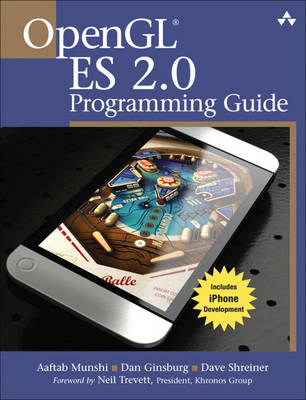OpenGL ES 2.0 is the industry’s leading software interface and graphics library for rendering sophisticated 3D graphics on handheld and embedded devices. With OpenGL ES 2.0, the full programmability of shaders is now available on small and portable devices—including cell phones, PDAs, consoles, appliances, and vehicles. However, OpenGL ES differs significantly from OpenGL. Graphics programmers and mobile developers have had very little information about it—until now.
In the OpenGL® ES 2.0 Programming Guide, three leading authorities on the Open GL ES 2.0 interface—including the specification’s editor—provide start-to-finish guidance for maximizing the interface’s value in a wide range of high-performance applications. The authors cover the entire API, including Khronos-ratified extensions. Using detailed C-based code examples, they demonstrate how to set up and program every aspect of the graphics pipeline. You’ll move from introductory techniques all the way to advanced per-pixel lighting, particle systems, and performance optimization.
Coverage includes:
- Shaders in depth: creating shader objects, compiling shaders, checking for compile errors, attaching shader objects to program objects, and linking final program objects
- The OpenGL ES Shading Language: variables, types, constructors, structures, arrays, attributes, uniforms, varyings, precision qualifiers, and invariance
- Inputting geometry into the graphics pipeline, and assembling geometry into primitives
- Vertex shaders, their special variables, and their use in per-vertex lighting, skinning, and other applications
- Using fragment shaders—including examples of multitexturing, fog, alpha test, and user clip planes
- Fragment operations: scissor test, stencil test, depth test, multisampling, blending, and dithering
- Advanced rendering: per-pixel lighting with normal maps, environment mapping, particle systems, image post-processing, and projective texturing
- Real-world programming challenges: platform diversity, C++ portability, OpenKODE, and platform-specific shader binaries
- ISBN10 0321502795
- ISBN13 9780321502797
- Publish Date 31 July 2008 (first published 24 July 2008)
- Publish Status Out of Print
- Out of Print 14 March 2014
- Publish Country US
- Publisher Pearson Education (US)
- Imprint Addison-Wesley Educational Publishers Inc
- Format Paperback
- Pages 480
- Language English
